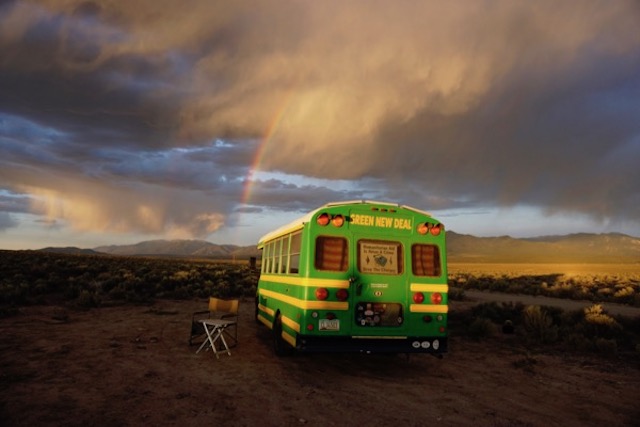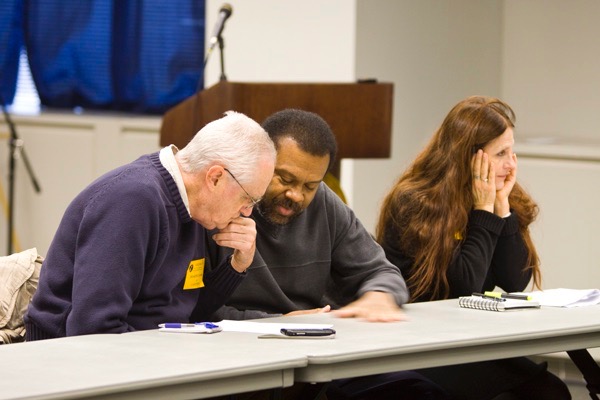We Explore an EJ Activist’s Experience to Show How The Flawed Bill Will Not Work
Waiver, Loopholes & Exemptions Gut Environmental Justice Impacts
Cruel Manipulation, False Hope, Cynical Political Opportunism
[Postscript Below]
NJ Gov. Murphy signed the flawed EJ bill into law today, read his over the top press release (curiously, which does not provide a link to the bill he signed into law):
As expected, Murphy claimed national leadership for signing the nation’s so called strongest EJ bill into law.
I blame the so called EJ activists not only for being duped by Democrats and negotiating a weak, 10 year old, and gutted compromise bill at exactly the time the BLM movement was building political power, but for actively encouraging this to happen (and not just members of the Environmental Justice Advisory Council, but other Foundation funded sycophants like Amy Goldsmith, Doug O’Malley, Ed Potasnak, and the rest of the NJ green mafia that have provided cover for Gov. Murphy).
I don’t now how anyone can call a law that totally ignores the climate emergency and climate justice a national model.
I don’t know how anyone can call a law the sets a huge 100 ton per year air pollution regulatory threshold – thereby exempting thousands of small pollution sources that poison black and poor people – a model for regulating “cumulative impacts”.
I don’t know how anyone can call a law that totally ignores an actual Camden NJ based US District Court decision regarding the DEP’s failure to enforce civil rights laws in the DEP permit process as creating new “rights” for EJ communities.
I don’t know how a law that eliminated real local control and a local veto power by surrendering all legal power to DEP as some kind of model of democratic accountability (activists typically criticize this as anti-democratic “preemption”).
I don’t know how anyone could call a law that provides no standards or mandatory content requirements for an EJ impact statement and vest total control in drafting such an Environmental Justice Impact Statement in the hand of corporate polluters as promoting science, activism, democratic accountability or justice.
I don’t know how anyone can support allowing DEP to unilaterally invoke a loophole to waive the permit denial and permit conditions of the bill – without ANY technical standards, limits, or procedural protections – and to over-ride a DEP scientific finding of actual disproportionate public health and environmental impacts on an EJ community, merely by finding a “compelling public need” for the polluting project.
I’ve written about the flaws of the bill many times and explained how and why it won’t work. So today, instead of repeating that, I will illustrate the flaws by using the Governor’s own press release.
Once again, despite my prior criticism of how corrupt this co-optive practice is, Gov. Murphy quotes environmental justice activists in his press release.
I don’t want to single anyone out, but I was struck by this quote of support, both because I am not familiar with this individual (Melissa Miles) and because of what the quote hints at (i.e. “the rule-making process”): (Gov.’ press release)
“Environmental Justice communities are well aware of how race and income relate to environmental burdens,” said Melissa Miles, Executive Director, NJ Environmental Justice Alliance. “Our legislators have answered our call to action and now we must keep the voices of overburdened communities centered in the rule-making process.”
So let’s drill down on what Ms. Miles said and what it means.
1. Ms. Miles correctly notes the need for community involvement in the DEP rule-making process.
This confirms several criticism I have made, including: a) the bill can’t work without DEP regulations; b) the failure of the bill to provide any content requirements, citations of science or other regulatory standards, or numeric or narrative standards to guide and constrain DEP regulations. This Legislative abdication of their policymaking role provides DEP with wide discretion – discretion they have abused for decades with respect to EJ; c) powerful corporate polluters have captured and rigged the DEP rule-making process; d) Gov. Murphy’s Executive Order on rule-making actually makes this capture worse and provides polluters more DEP access and procedural opportunities to intervene behind the scenes with no fingerprints, while frustrating activists and the public’s ability to influence DEP rules; and e) the complex science and legal procedures of the rule-making process are heavily biased against communities and heavily in favor of powerful corporate polluters who can hire the experts and lawyers that bend laws to their favor in DEP’s rule-making process.
Strike One.
2. A quick Google reveals that Ms. Miles was previously employed by the Ironbound Community Corp. (ICC). ICC is part of what really amounts to a Newark – Essex County machine. They go along to get along, and know how to shake the money tree. Look only at the ICC-Booker-Covanta deal that allowed the Newark garbage incinerator to continue polluting. (Isn’t it curious that all the EJ advocates quoted in the Gov.’s press release were involved with ICC?)
Strike Two.
3. But I was intrigued by her current role as ED of the NJ EJA, so I Googled that and found her (undated) appointment press announcement.
I’d like to focus on the activist “experience” and “expertise” that is touted as the basis for her hiring – not as a personal attack, but to show exactly how the flaws in the bill will actually work (I have numbered the points):
“I wasn’t born, I was grown” is Melissa’s personal tagline and speaks to her entry into environmental justice advocacy, which was the result of the political and popular education she received from community organizers at ICC. As a Newark resident Melissa was encouraged to testify at hearings on (1) the clean-up of the Passaic River, the site of the world’s largest concentration of dioxin. She did (2) truck counts, (3) air monitoring and (4) community mapping with (5) her children in a double stroller. She was also part of the Community Advisory Board and represented the community at trainings on (6) climate justice and (7) disaster preparedness workshops before she was even fully invested in the cause. “When I became active in the struggle it was because others asked me to. It was when my son got (8) asthma and I knew that (9) pollution was the cause that I became an (10) activist.”
So let’s drill down on the specifics of Ms. Miles’ wonderful experiences:
(1) – the Passaic River toxic site cleanup and dioxin are correctly noted as important.
But the bill exempts all toxic site cleanups from the environmental justice impact statement and cumulate impact reviews. (Besides, the Passaic River cleanup was a federal Superfund case and decisions were made by EPA. The NJ EJ State law does not apply to federal Superfund or EPA decisions. Worse, ICC was NOT a leader – they supported EPA’s partial cleanup & capping plan, which was opposed by other environmental groups for failure to fully cleanup the river.)
(2) – Ms. Miles has experience conducting truck counts, which are an important indicator of mobile source air pollution.
But the bill does not apply to mobil source air pollution. Equally bad, local port pollution from airplanes, ships, and diesel powered trains is not regulated by the bill.
Yes, mobile sources are in the bill’s definition of “pollution”, but the bill is limited to DEP permits. DEP does NOT issue permits to mobile sources. If anyone thinks that DEP is legally able to hold an industrial polluter accountable for mobile source pollution, I’ve got some land in Florida for sale. This is why the bill is unworkable.
In order to be workable, as I’ve written, the bill needed to amend the underlying laws that authorize DEP permits, e.g. the NJ Air Pollution Control Act, and to mandate the DEP revise the technical basis for their various permit review methods to account for cumulative impacts, including from mobile sources (e.g. risk assessment, air quality monitoring and modeling, and State of the Art determinations.).
But the bill did NOT do that. In fact, it does the opposite: the bill does once substantively cite a specific provision of the NJ Air Pollution Control Act (in Section 4.f. on page 8) but it does so to PROTECT THE POLLUTER, NOT THE PUBLIC by allowing the polluter to continue polluting during DEP’s renewal of permits and invoke a “permit shield” provision. What this will do is allow polluters to continue to operate, in the rare event that DEP imposes tough “conditions” on permit renewal, while the polluter challenges those provisions administratively and later in court.
(this follows a pattern in the bill – the only precise language and clear standards used are there to protect the polluters)
3) – Ms. Miles experience illustrates the need for ambient air monitoring – in the community and at the fence-line of industrial pollution sources.
But the bill: a) does not include a mandate that DEP beef up its tiny air quality monitoring network in EJ communities; b) does not change the way DEP regulates air pollution sources to mandate that they conduct fence-line and community air quality monitoring; c) does not change the lax and ineffective way that DEP allows polluters to conduct their own “air quality modeling” and “risk assessment” to analyze the health impacts on local EJ communities; and d) ignores the findings of prior DEP research in Paterson NJ to monitor local small sources of hazardous air pollutants and assess the cumulative impacts of those pollution sources.
(4) – Ms. Miles’ experience shows that community mapping is important to understanding the implications of pollution sources and environmental justice.
But the bill does nothing – in terms of specific standards, resources, or mandates – to require DEP to map the relevant public health and pollution characteristics of EJ communities. Polluters are not required to map these impacts and characteristics in “Environmental Justice Impact Statements” or to illustrate them to communities or facilitate DEP regulation.
(5) – Ms. Miles makes clear that children are important. They are more sensitive to pollution. The location of children’s day care centers and schools are often located very close to pollution sources, creating “hot spots”. Scientists classify children as “vulnerable populations” and “sensitive receptors”.
But the bill does not define, provide standards, or require consideration of children or other “sensitive receptors” in how DEP conducts risk assessment or how a polluter prepares an “Environmental Justice Impact Statement”. The bill does not address local “hot spots” or specify any standards for regulating the distance between a sensitive receptor and a pollution source.
(6) – Ms. Miles highlights climate justice as critically important in principle.
But the bill totally ignores climate, i.e. greenhouse gas emissions are not regulated by the bill or part of the DEP Environmental Justice Impact Statement or cumulative impact reviews. The DEP may not deny permits or impose conditions to mandate reductions in GHG emissions, or mitigation of GHG emissions, or adaptation to climate change. The DEP may not require energy conservation, energy efficiency or renewable energy in permits – even basic stuff like solar and planting trees. THIS IS THE OPPOSITE OF CLIMATE JUSTICE.
(7) – Ms. Miles’ experience includes disaster preparedness and is correctly mentioned as important to EJ communities.
But the bill does not apply to NJ’s Disaster Planning and Preparedness program. The bill does not apply to NJ DEP’s “Toxic Catastrophe Prevention Act” program (see “The Fatal Fifteen” for the implications of that). NJ does not have a climate disaster preparedness program. EJ community will remain at risk. The bill does NOTHING to reduce those risks.
(8) – (9) – Ms. Miles was motivated to become an activists because her child suffered from asthma. Especially in children and the elderly, Miles correctly noted asthma as a serious problem in EJ communities. Climate change will make current urban air quality far worse. Current poor urban air quality is due primarily to ground level ozone, although small particulates (PM2.5) are a big problem too.
But the bill ignores the major causes of poor local air quality: climate change warming; cumulate impacts of small industrial sources (less than 100 ton per year emission threshold in the bill); mobile sources (cars and trucks) and other “ozone precursors” and major sources like airplanes, ships, and trains. It will do nothing to reduce the impacts and risks of asthma and other respiratory and cardio-pulmonary diseases associated with current levels of pollution. And don’t forget that huge loophole resulting from the 100 ton per year threshold. Just look at the DEP’s Paterson NJ cumulative risk study to see the impacts of many small sources, including “hot spots”.
(10) – Miles’ experience shows the importance of activism.
But the bill erects barriers to and frustrates activism: a) the environmental justice impact statement will be prepared by consultants for the polluters, not the community; b) the complex legal and scientific nature of the DEP permit process is heavily biased against and almost impervious to activism; c) local veto power, where activist could have the most influence and hold local political leaders democratically accountable, was deleted; and d) all final decisions are controlled tightly by the DEP out of Trenton, where corporate polluters, political, and economic considerations hold sway and overwhelm any local activist pressure.
Street heat has been neutered by this law.
Strike 3.
The bill is an activists’ nightmare, not a national model.
Postscript:
The entire EJ debate is now playing on the corporate technocrats’ field, using DEP’s flawed regulatory tools (which remain unchanged by this law) and DEP’s formal regulatory procedures, which neuter public involvement.
The corporate consultants will bamboozle local activists and DEP with “sounds like science” environmental justice impact statements (I’ve suggested people consider NJ Transit’s impact statement as a model of that).
In contrast, just think how much more leverage activists would have over DEP if the EJ impact statement had to meet specific scientific and technical standards in the legislation. If the EJ impact statement was written by a consultant that was paid by and reported to the community. If the community was provided technical assistance resources. If DEP were forced to apply the precautionary principle and base decisions on environmental justice impact statements, risk assessments, and air quality modeling procedures that were written by EJ groups and their scientific consultants. If DEP were forced to defend every aspect of their permit reviews to the community in the community.
But the bill does NONE of that. It does the opposite.
The activists will be disempowered by the process – and their one effective tool, a local veto power, was stripped from a prior version of the bill and is NOT in the bill the Gov. signed into law.
In contrast, just think how much more power local EJ activists would have if their local elected officials had veto power.
Activists will be unable to make Civil Rights Law disproportionate burden as discrimination arguments. Activists will be unable to argue “structural racism” arguments.
The burden of proof to support EJ discrimination under federal law under the federal Appellate Court’s interpretation is far too great, literally requiring concrete evidence of an intent to discriminate.
In contrast, just think if NJ civil rights law merely requiring a showing of disproportionate burden as presumptive proof of discrimination.
Activists will be unable to make climate justice arguments.
But corporate lawyers and lobbyists are given a platform to make economic and “compelling public need” arguments – which they’ve never had before under NJ environmental laws – to leverage DEP into issuing waivers.
Corporate lobbyists have always made the economic development and jobs arguments to undermine public health and environmental protections, but they didn’t have the law on their side. This bill now puts the law on their side.
And DEP will be insulated from activists concerns, while being subject to top down political edicts from the Gov.’s office or influential legislators who are beholden to corporate interests.
The law makes the status quo WORSE!
Heckofajob NJEJAC, ICC, CWA, Environment NJ, NJ LCV and the rest of the foundation funded tools who supported this law.



